Yellow spider lilies at peak and agave weevil death
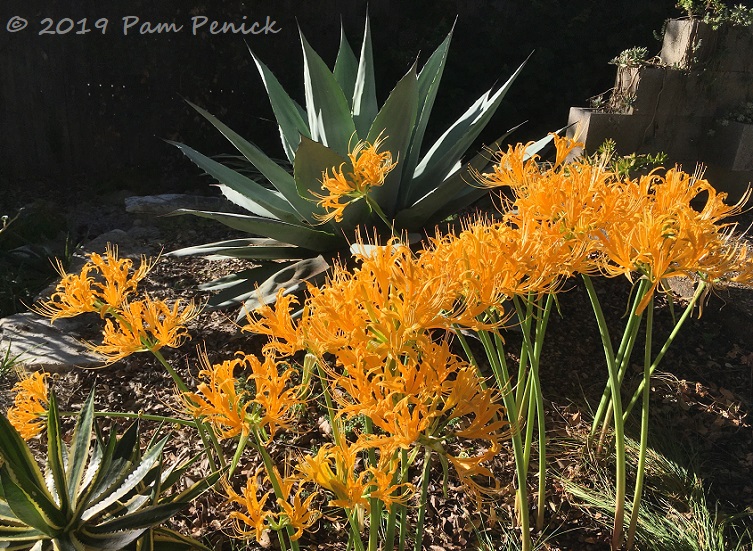
First the good: my yellow spider lilies (Lycoris aurea) are at peak bloom. Every flower has opened and seems filled with golden sunlight. They thrill me every time I look though my office window or step out onto the back patio.
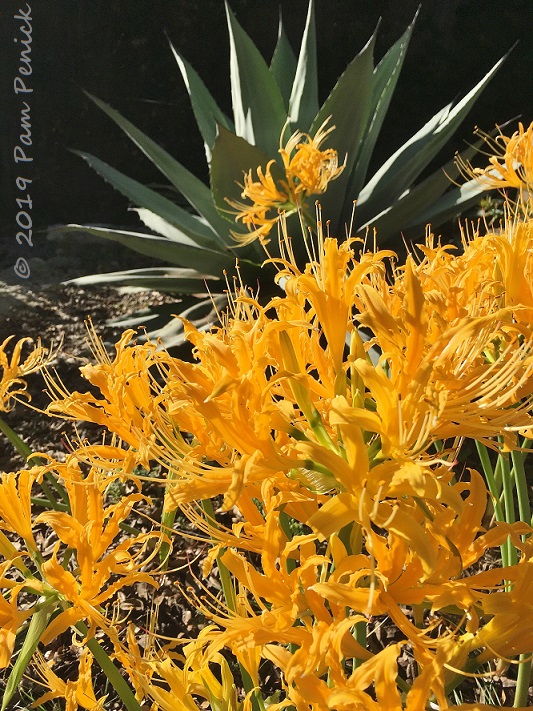
Shazam!
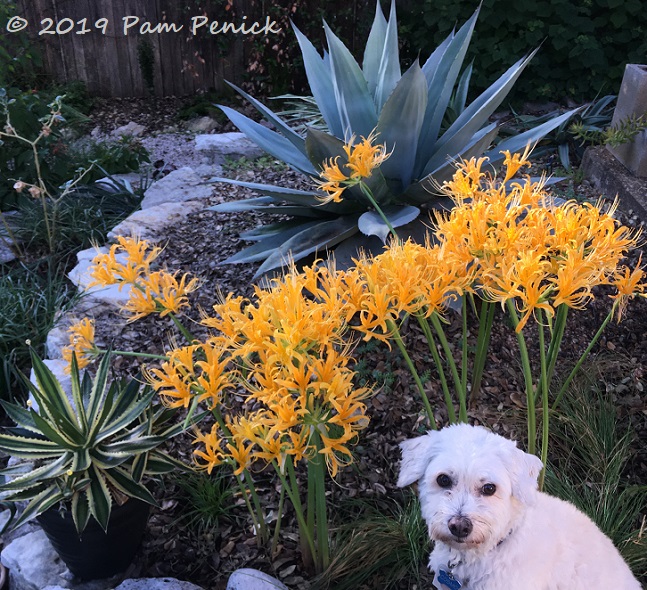
Cosmo had to get in on the action too.
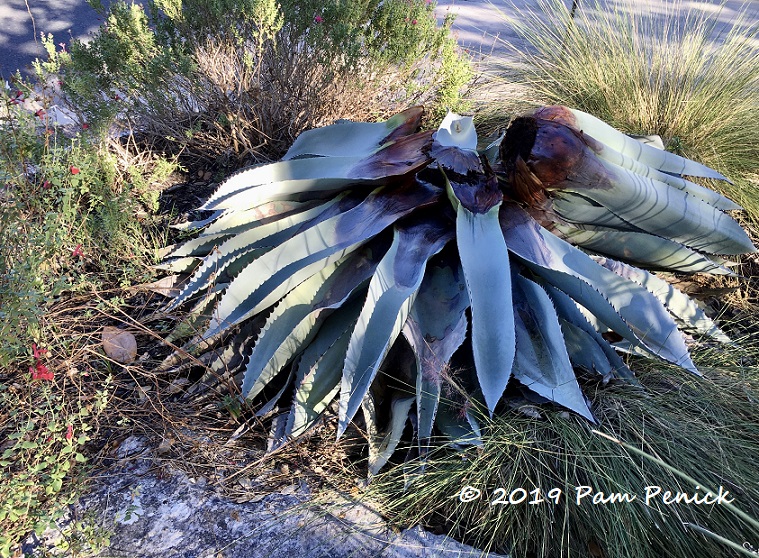
And now the bad: the most beautiful whale’s tongue agave (A. ovatifolia) ever — my neighbor’s agave, which I planted for her years ago — has finally died, and my verdict is that the agave snout-nosed weevil killed it. When I first noticed a rotting of the middle leaves, I thought it might be due to overmulching. But as it progressed, the telltale signs became apparent: weevils had gotten into its heart. Two nights ago, the crown of the plant, severed from the base, toppled over. Decapitated!
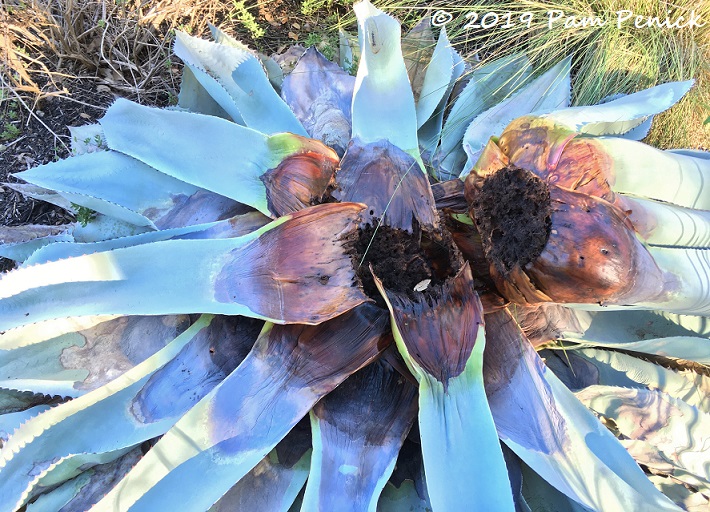
If you were to dig around in this smelly, soft mess, you’d find weevil grubs. There is no cure once an agave is infected by these nasty pests, and you generally don’t see the signs until it’s too late. The only thing to do now is haul away the carcass and don’t plant another agave or yucca here because they could become infected too. And of course nearby agaves and yuccas are now at risk — i.e., mine!
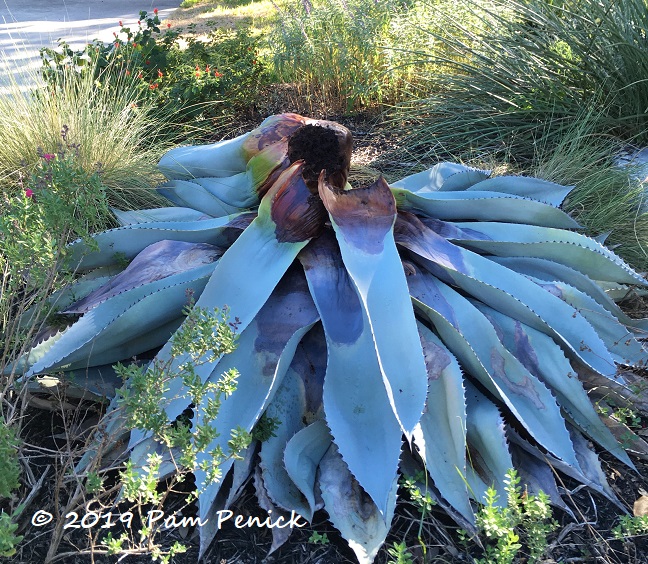
I wish I had treated this agave as I occasionally do my own big agaves, with Bayer systemic insecticide, which is mixed and poured around the base of the plant. But it’s not my plant, and there are flowering plants around it (i.e., pollinator plants), and I didn’t want to impact pollinators with the Bayer treatment. And so the weevils found it. Needless to say, I will be treating mine shortly, as all those weevils will be looking for their next meal.
If you have any agaves or softleaf yuccas (I hope that Yucca rostrata isn’t susceptible but don’t know for sure), read the pages I linked to in this post as well as Debra Lee Baldwin’s post about the weevil for more information.
__________________________
Digging Deeper
Come learn about gardening and design at Garden Spark! I organize in-person talks by inspiring designers, landscape architects, authors, and gardeners a few times a year in Austin. These are limited-attendance events that sell out quickly, so join the Garden Spark email list to be notified in advance; simply click this link and ask to be added. Season 8 kicks off in fall 2024. Stay tuned for more info!
All material © 2024 by Pam Penick for Digging. Unauthorized reproduction prohibited.


Can’t get enough of those cheerful lilies. Poor Cosmo doesn’t quite know if he wants to be in the picture or not.
That weevil business looks serious. I hope they don’t move on to your plants.
He walked into the photo, but it’s true he wasn’t so sure about sitting there and getting his picture made. Ha!
That is a stunning stand of yellow lycoris. It really was a stunning year for them. As to the agave-darn that weevil. I’m sorry for whomever has to do the clean up. It’s really is a stinky job.
It sure is.
We have lost two whale’s tongue agaves this month Pam. They were focal points so we are quite sad about this development. Your post was confirmation of the cause we had suspected. Thanks!
I’m sorry, Barbara. It’s hard to lose a plant of this size, especially when some summers we get no rain and these plants can handle that so well.
The spider lilies are beautiful. Our red ones seemed to like the drought! So sorry that the weevils got that beautiful whale tongue agave. Di this happen at your first garden, too?
No, but I did lose a ‘Macho Mocha’ mangave, which I’m pretty sure was infected at the nursery because it collapsed not long after I brought it home.
What a bummer about the agave! Nice to see Cosmo in a cameo appearance.
He’s always right underfoot, but every now and then he pops up in a photo.
Damn. I’m sorry (for you and your neighbor).
It is such a loss.
I so prefer the yellow to the pink spider lilies and need to get a stand going to see if they like SoCal as much as Austin. That pest has made it to Calif. too, though not to my garden yet, knock wood. So sorry for the loss!
I’m sorry to hear the weevil is now in CA. It’s the worst!
Agaves are also affected by another deadly beetle, the rhino beetle Strategus aloeus. They not only affect agaves but also kill most other North American monocots and many palms. Their tell-tale sign is a hole in the ground next to the base of the plant about the size of a quarter. Again systemic pesticides that last several months will keep them at bay but overly susceptible species have to be monitored closely. Agaves and dasylirions are particularly difficult because the beetle usually won’t bother palms or yuccas once they have grown trunks and their growing point starts to get above ground.